Press it, roast it, slice it, crush it or mince it. There are few savory dishes that garlic doesn’t give more depth of flavor and gusto to. Know that its health benefits may help your heart and blood pressure, and may even reduce inflammation. Try our healthy recipes for easy-to-make, garlic-rich dishes. And, oh, yes: Meet a woman who really understands garlic’s appeal, because she grows and harvests it, not for the money, but for the pure love of garlic.
Anne Weiland adores garlic. And that’s one reason she grows a lot of it — about 1,500 bulbs each year on her small hobby farm in Bay City, Minn. She and her family eat a fair bit of it themselves, and sell the extra harvest at farmers’ markets, to restaurants and at the Minnesota Renaissance Festival.
Weiland, 46, isn’t a professional farmer. She does regulatory and quality assurance work, and data analysis, for medical device and pharmaceutical companies. Living off the land is simply a lifestyle she prefers. In addition to tending her prolific garlic garden, she grows most of her vegetables, gathers morel mushrooms from the woods, and sources her dairy and meat from local producers.
“I try to either forage or grow most of what I eat,” she says. We recently asked Weiland to give us an update on garlic, which people have been cultivating continuously for some 6,000 years.
EL | How many varieties of garlic do you grow?
AW | Six. Some are mild and others are hot and spicy, but their flavors all change a bit based on how you prepare them.
EL | Can anyone cultivate their own garlic crop?
AW | It’s a relatively easy crop to grow in most soil — a little sandy is best — and it doesn’t require a lot of room. It’s a lot like planting a flower bulb. Here in the Midwest, we plant the cloves in the fall and harvest in midsummer.
EL | Does homegrown garlic taste different than the conventional stuff?
AW | Homegrown garlic generally has a smoother flavor, and it’s not as sharp or bitter as most commercially produced garlic. Virtually all the garlic that’s commercially produced in the United States comes from California and is stored at almost freezing temperatures, which gives it a longer shelf life but isn’t ideal for flavor. A pretty important part of producing garlic properly is hanging it up in a dry area that’s out of sunlight but has good ventilation. I hang mine for at least a month to cure it.
EL | Can you eat other parts of the garlic plant?
AW | Before harvest time, you have to snap off the garlic scapes, which are actually flower stalks, because all the energy will go into producing the flower and not the bulb. Those are edible, too, and have a milder garlic flavor.
EL | Any unusual garlic recipes you can recommend?
AW | There is a refreshing drink that I like: For one person, blend a whole grapefruit (without the peel and seeds), the juice of one lemon, a teaspoon of olive oil, an inch of peeled gingerroot, and six to seven peeled garlic cloves. It sounds odd, but it’s actually really good.
EL | What would you say to people who avoid garlic because they are afraid of reeking of it?
AW |I have found that eating very fresh garlic minimizes or even eliminates any odor. When in doubt, surround yourself with other garlic lovers!
Garlic Guide
A member of the lily family, garlic is a cousin to leeks, chives, onions and shallots. There are three major types of garlic in U.S. stores: the white-skinned, strongly flavored American garlic; the mauve-colored, somewhat milder Mexican and Italian garlic; and the white-skinned, mildly flavored elephant garlic (which is typically the size of a tennis ball). To find more exotic varieties, check out your local farmers’ market. Here’s how to eat them.
1. Scapes: These immature flower stalks — which are harvested in early summer — can be used in place of asparagus, or as an alternative to basil in pesto recipes.
2. Leaves: Best eaten when immature and tender, leek-like garlic leaves provide a mild garlic flavor in salads and sautés.
3. Bulb (or Head): Wrapped in protective papery skin, whole bulbs can be roasted or broken apart into individual cloves. Note that most recipes call for one or more cloves, not bulbs.
4. Clove: After removing the skin, the fleshy white part of garlic can be minced, chopped, roasted or eaten pungently raw. Smaller cloves have more intense flavor.
Nutrition Know-How
- Allicin, the phytonutrient responsible for garlic’s strong odor, is a powerful antibacterial and antiviral agent. To get the best cancer-protective benefits from garlic, wait at least five minutes after chopping or crushing before eating, cooking or adding acidic foods to it. That will help stimulate the enzymatic process that converts garlic’s alliin (a sulfoxide) into allicin (a thiosulfinate).
- Researchers are beginning to view obesity as a chronic state of low-grade inflammation. Early research indicates that consuming garlic, which has anti-inflammatory properties, may help regulate the number of fat cells formed in the body. Several nutrients in garlic help protect the heart. Its polysulfides are used by red blood cells to produce hydrogen sulfide gas, which can help blood vessels expand, keeping blood pressure in check. Garlic’s sulfur-containing compounds also support the liver by bolstering its detoxification enzymes.
- Several nutrients in garlic help protect the heart. Its polysulfides are used by red blood cells to produce hydrogen sulfide gas, which can help blood vessels expand, keeping blood pressure in check.
- Garlic’s sulfur-containing compounds also support the liver by bolstering its detoxification enzymes.
Kitchen Tricks
- To peel garlic cloves, place them on a flat surface. Gently press down with the flat side of a wide knife until the skin splits, making it easy to peel the skin away.
- Be careful with heat when cooking garlic. High heat can burn garlic very quickly, so it is important to keep an eye on it and stir while sautéing. Some chefs recommend cooking it no longer than one minute, so you might wait to add garlic until the end of sautéing.
- To remove garlic odor from your fingers, rub them against stainless steel, such as a kitchen sink or the inside of a spoon.
Shopping and Storage Tips
- Select large, firm bulbs with well-defined cloves. Avoid cloves with small sprouts, or bulbs with separating cloves.
- Store in a cool, dry, dark place that allows for air circulation — such as a loosely lidded ceramic dish, paper bag or a wire-mesh basket inside a cupboard. Garlic will keep for a few weeks to a few months depending on its age when purchased.
- Peeled garlic can be kept in a sealed container in the refrigerator for a few days. Do not freeze uncooked garlic. Instead, slice garlic, dehydrate it, then freeze it in a plastic freezer bag.
How to Prepare Garlic
Roasted — Roasted garlic has a mellower flavor than raw garlic and can be used as a spread, in dressings and marinades, and in other recipes. To roast a whole head, cut off about a ½ inch of the pointy top of the garlic. Drizzle olive oil into a glass baking dish, place garlic cut side down, cover the dish with aluminum foil and roast in a 375-degree oven for 35 to 45 minutes, until the garlic is soft and golden. To use the garlic, squeeze the garlic paste out of the skins.
Crushed — For a mild garlic flavor, crush individual peeled cloves by firmly pressing them with the flat side of a knife or your hand. Add a clove or two of crushed garlic to a dish of extra-virgin olive oil, dressing or sauce to gently flavor; remove before serving. You can also add crushed garlic cloves to chicken or other meats prior to roasting by cutting small slits in the meat and inserting a clove in each slit.
Minced — Lightly crush a clove and then chop garlic into very small pieces. Use minced garlic when you want it to meld with the other flavors in soups, sauces and vegetable dishes.
Sliced — Use a paring knife or garlic-slicing gadget to thinly slice garlic. Sliced garlic caramelizes beautifully when sautéed. In dishes it has a stronger physical presence than minced.
Pressed — Using a garlic press is a quick way to get the fresh taste of garlic without a lot of chopping. Add pressed garlic to sauces, dressings and marinades. Create a zesty dip by filling a small dish with extra-virgin olive oil and pressed garlic. Sprinkle with crushed chili flakes, fresh herbs or a grating of Parmesan cheese.
Recipes
White Bean and Roasted Garlic Pâte
Pair this dip with whole-grain crusty bread or vegetable crudité. Add diced sundried tomatoes or chopped olives for zesty variations.
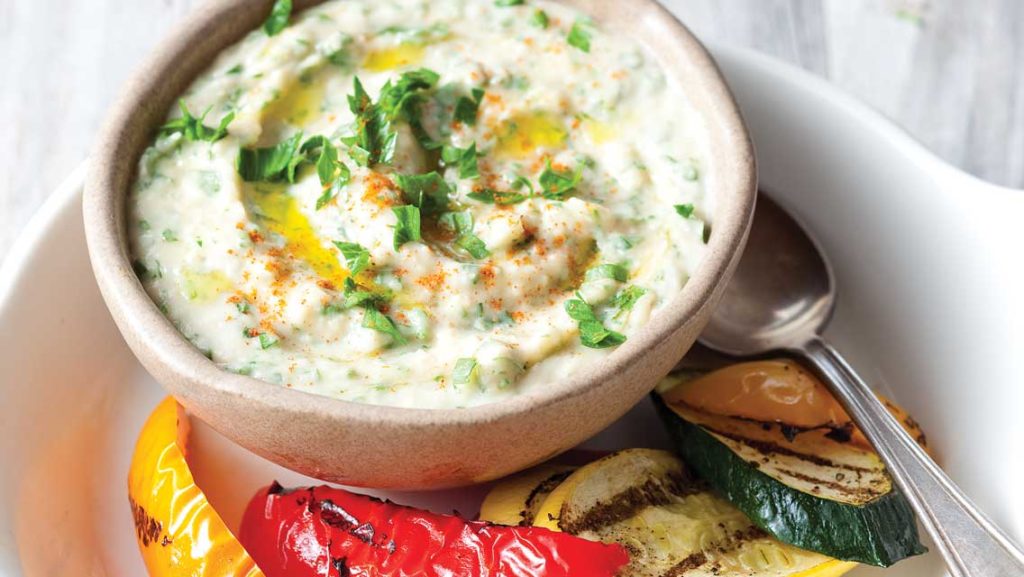
Makes about 2 cups
Ingredients
- 1 15-ounce can cannellini beans, drained, or 1¾ cups cooked cannellini beans
- 1 to 2 heads roasted garlic cloves removed from skin
- 2 tbs. olive oil
- ½ cup chopped Italian parsley
- Salt and cayenne pepper to taste
Directions
- In a food processor, blend the cannellini beans, roasted garlic and olive oil together. Add the Italian parsley and pulse gently to mix. Season with salt and cayenne pepper to taste.
- Before serving, drizzle with olive oil and sprinkle with more chopped parsley and a touch of cayenne pepper.
Garlic and Pecan Crusted Sole Fillets
These fillets can also be pan fried — but be careful with the heat, since the nuts and garlic will burn quickly.

Makes four servings
Ingredients
- 1/3 cup pecans
- 1/3 cup wheat germ (or quinoa flakes for the gluten intolerant)
- Zest of one lemon
- 3 cloves garlic, crushed
- Salt and pepper to taste
- 1 pound sole fillets (or any mild, white fish fillets)
Directions
- Preheat oven to 400 degrees F.
- Blend the pecans, wheat germ, lemon zest and garlic together in a food processor.
- Season the nut mixture with salt and pepper, then press it on the fish fillets and arrange on a foil-lined baking sheet.
- Bake the fish for 20 to 25 minutes, until fish is cooked through and nuts are toasted.
- Serve with lemon wedges and a green salad.
Kale, Bell Peppers and Pine Nuts Sautéed With Garlic
This simple-to-make side can become a main dish by adding kidney beans after sautéing the kale. Top with a shaving of Pecorino Romano cheese.
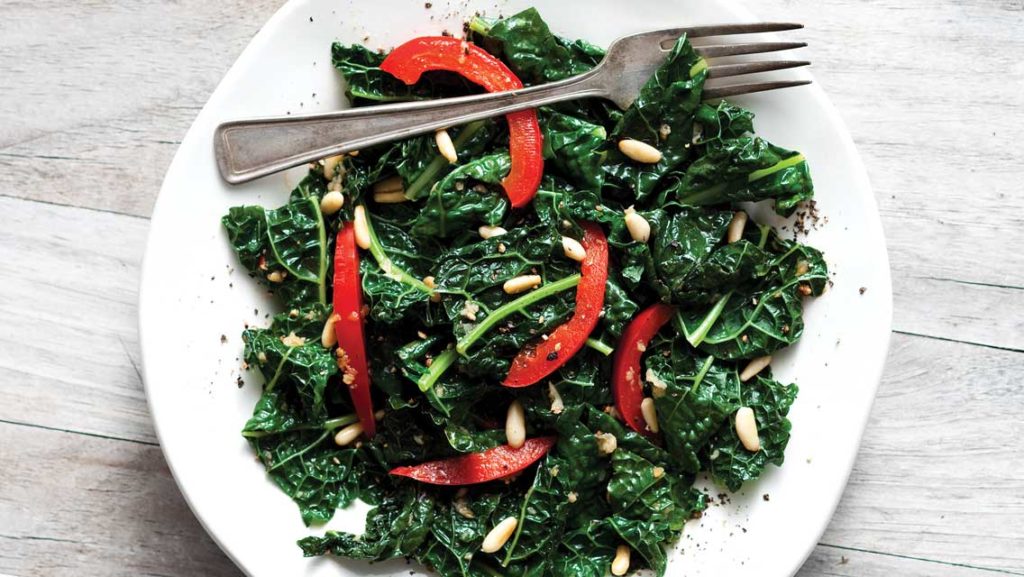
Ingredients
- 1 bunch kale, tough stems removed, leaves coarsely chopped (about 4 cups)
- 2 to 4 cloves garlic, minced or sliced
- 2 tbs. extra-virgin olive oil
- 2 tbs. pine nuts
- 1 red bell pepper, cut into strips
- Sea salt and black pepper to taste
Directions
- Wash kale and allow water droplets to remain on leaves.
- In a small dish add garlic to olive oil, stir, and allow to sit.
- Heat a heavy skillet over medium heat and toast pine nuts until golden and fragrant, stirring constantly for about a minute. Remove nuts from pan.
- Add the garlic and oil to the warm pan and sauté over medium heat, stirring once to flavor the pan, then add bell pepper strips and season with salt and pepper (the salt will help the peppers release their moisture, which will keep the garlic from burning).
- Sauté peppers for about two minutes and add kale. Stir briefly, cover the pan with a lid, and turn heat to low.
- Cook for about two minutes, then stir.
- Cover again, turn off heat, and allow veggies to steam in the pan for two minutes before serving.
Garlicky Brussels Sprout Gratin
This hearty side dish pairs with just about anything, and is substantial enough to be a vegetarian main dish as well.
Makes four to six servings
Ingredients
- 1 pound Brussels sprouts, end and tough outer leaves trimmed
- 3 to 5 cloves garlic, thinly sliced
- 3 tbs. olive oil
- ½ tsp. salt
- Cracked black pepper to taste
- 2 ounces, (about ½ cup) grated Fontina cheese
- ¼ cup chopped walnuts
- ¼ cup whole-wheat panko bread crumbs (or quinoa flakes for the gluten intolerant)
Directions
- Preheat oven to 375 degrees.
- Slice Brussels sprouts lengthwise into about three slices each, about ¼ inch thick.
- Slice garlic and place in a small dish with 1 tbs. olive oil and set aside.
- Heat a heavy skillet with 1 tbs. of olive oil and add sprouts. Add salt, which will help the sprouts release some of their moisture, and ¼ cup water.
- Cover and cook for about one to two minutes until sprouts are al dente, or cooked but still firm.
- Mix in the black pepper and garlic, and put the whole mixture into a gratin dish.
- Sprinkle with grated cheese.
- Mix walnuts and breadcrumbs with 1 tbs. olive oil and sprinkle over cheese.
- Bake for 20 to 25 minutes, until cheese is melted and bubbling.
This article originally appeared as “Dig Into Garlic” in the October 2011 issue of Experience Life.

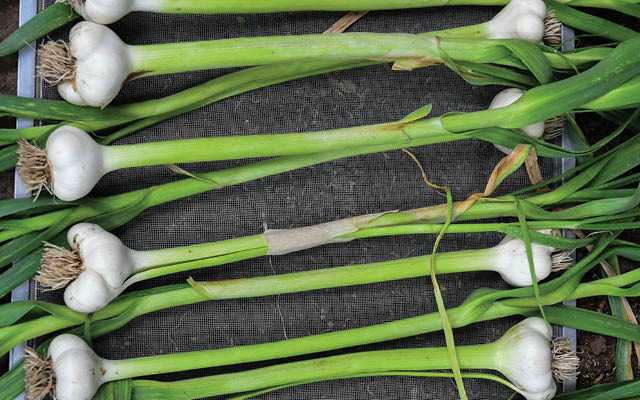
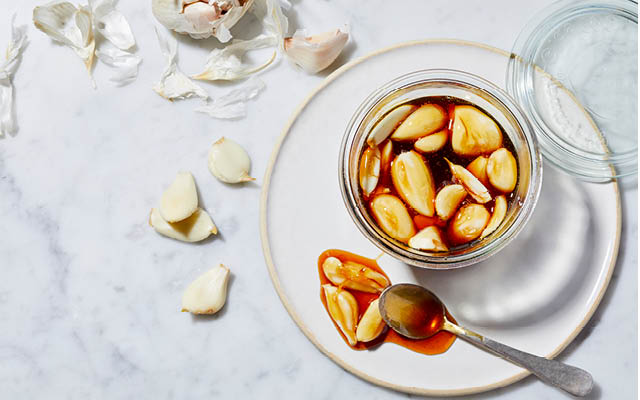
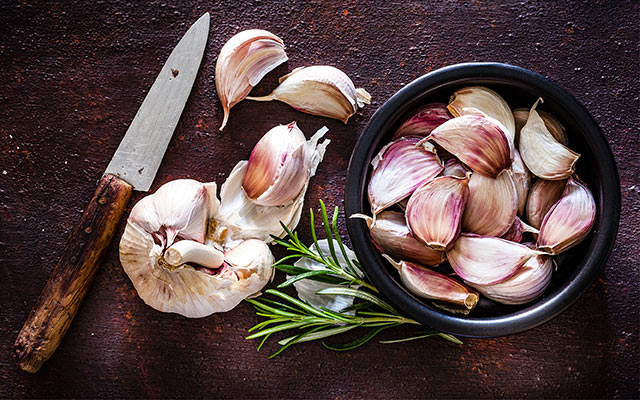
This Post Has 0 Comments